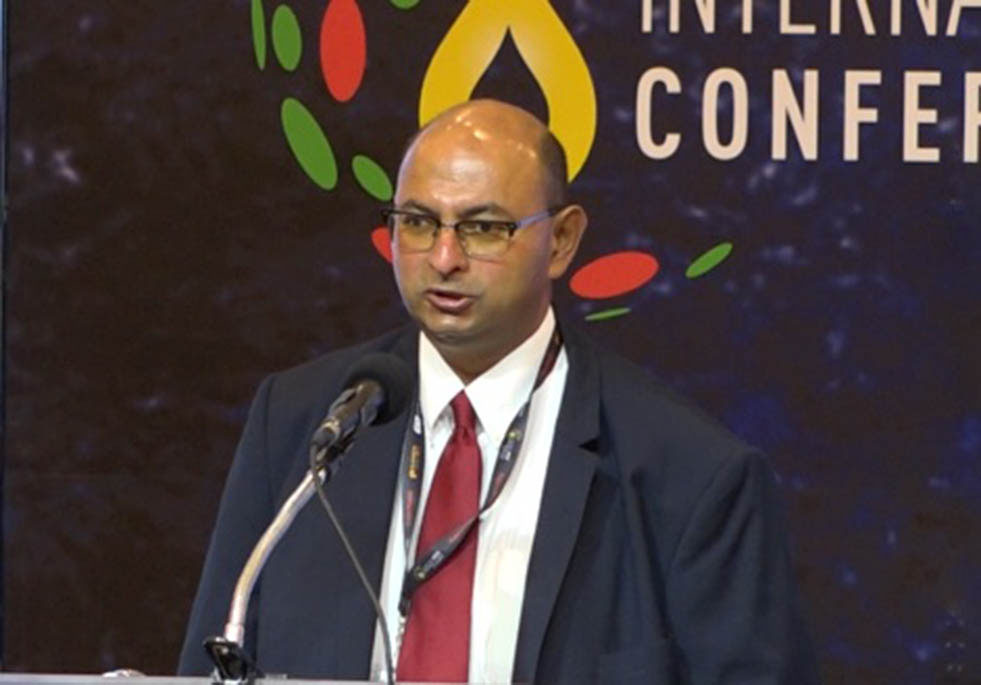After rebuffing public qualms about its timeline, the government has finally admitted that its massive gas-to-energy project will be delayed by around a year.
It had been promised by the end of this year but it had been clear for some time now that that timeframe was unattainable.
It was only at this week’s oil and gas conference that the official announcement was made.
Project Lead Winston Brassington announced that the end of next year was what was being looked at. The timeline deferral, according to Brassington, is due to a number of factors including supply chain impediments and works delays.
The GtE project is divided into three components – Pipeline, Power/NGL (Natural Gas Liquids) Plant and Transmission Line/Substations. The Pipeline component includes a 250 km 12” pipeline from two Floating Production, Storage and Offloading platforms (FPSOs) to deliver some 50 MCF/D (1,000 cubic feet per day) of gas to shore, although the pipeline has the capacity for 120+ MCF/D. The Power/NGL Plant component is the 300 MW Combined Cycle and NGL Facility while Component 3 will have Transmission Line/Substations of 85 km of 230 & 69 KV Transmission Lines, 3 new substations, and upgrades to 2 other sub-stations.
“These three projects [components] …given the overall complexity of it and the level of interfaces, our delivery period of the first half of 2025 is reasonable and we believe we will achieve this and we will be on time and the project to be on time for the combined cycle by the end of next year,” Brassington said on Tuesday during a presentation on the project at the conference.
The pipeline aspect for which ExxonMobil is responsible in the three-prong project, will be completed by the end of this year. “The pipeline is coming in on schedule for end of 2024 and it is coming in on budget at US$1b,” Brassington pointed out, while repeating that the project sums were coming out of cost oil and that cost includes everything.
When it took office in 2020, the PPP/C promised to deliver the GtE project by 2024 and said it will not only lower consumer tariffs by 50%, but that it will also replace the current Heavy Fuel Oils that this country currently uses with cleaner fuel. Currently, the power utility, Guyana Power and Light, provides electricity at a rate of 15 US cents per kilowatt per hour. Government last April sought a US$660M loan from the United States EXIM Bank for the project and is still awaiting approval of that sum, which it believes is delayed because of US legislative policies. However, it is still optimistic the funds will be approved and is in the meantime using state funds as it waits.
“At this point and time we are looking at about a four-month delay. Our independent engineer projects’ analysis is that this should be online by April of next year. Of course we are working hard to try to do the best we can but we have to be realistic. The NGL facility will come on line with the “Simple Cycle”, and the “Combined Cycle” with the gas will be at the end of 2025,” he explained. Components of the project, he explained include a 12-inch pipeline that is coming in for a total 250 km, from one mile deep below the Liza 1 and Liza 2 FPSOs. It will be laid for 225 km at sea and then another 25 km to get to Wales. ExxonMobil says that it is on schedule for completion by the end of this year.
While the capacity of the 12-inch pipeline is to cover over 120 MCF/D, Brassington said that government’s “commitment at this time is to deliver 50 MCF/D that is about 40% of pipeline capacity of 120+ MCF/D.” Brassington reminded that the pipeline alone is not the project, as he pointed to the 300 MW ‘Combined Cycle’ plant and NGL Facility, which is largely responsible for producing the cooking gas. US-based company CH4-Lindsayca is building that plant and they have started and have ordered and are waiting on the turbines to be delivered.
And when energy to power the transmission lines is ready, he said that those substations will see some 85 km of new transmission lines with this country then being able to, for the first time, to increase from 69 KV and “we are going to be going to 230 KV Transmission Lines, reflecting the growing demand for power and the need to transmit more power.” The three new substations included will be located at Wales, north of the power plant, while the other two will be Goedverwagting and another at Eccles. Government will also be upgrading other substations.
And while some have pointed to the delayed US loan being a humbug and setback to the project which could see it being delivered later, Vice President Bharrat Jagdeo had recently said that the project will go ahead and be completed whether the loan is approved or not, given the alternative arrangements already made. With ExxonMobil giving the end of year for the completion of their scope of works, Jagdeo said that government’s phases will also be completed, if not together, very shortly after.
“I think it would be substantially completed. So you won’t have much of a mismatch. And we have and we have a working taskforce that is looking at all of these things together, in which Exxon sits on that taskforce too. Exxon is there, the people who are building the LNG facility and power plant, and the people working on the transmission, so we have a close coordination of these three areas. We may have a small timing difference, but they are all moving ahead; all three components are moving ahead as we speak,” he had said earlier this month.





